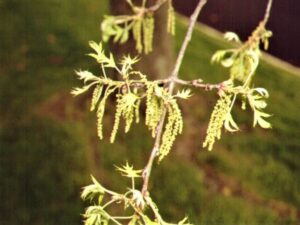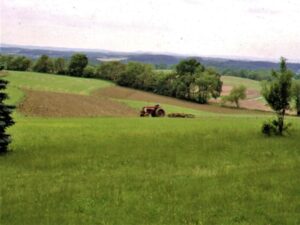Why use local growing degree-day models?
- You need to know local growing degree-day accumulation values to use pest scouting/management target lists like this.
- Timing is everything in pest management! Degree-day models allow us to predict when to scout for pests and when to target vulnerable life stages of pest development.
- Growing degree-days (GDD50) refer to the of accumulation heating units, which are the average air temperature over a 24h period minus the minimum temperature threshold. To be considered a ‘growing’ degree-day, the minimum (or base) temperature threshold is 50°F.
- GDD50 can be used to determine when pest life stage events such as egg hatch, adult emergence, crawler activity, adult flight, and others are likely to occur.
- Many times plant and insect developmental stages coincide, thus Plant Phenological Indicators can be utilized to accurately scout for pests.
- Luckily, we do not need to manually enter or track this data due to the availability of FREE online tools.
Important notes about growing degree-day models:
- These models do not replace scouting. They should guide scouting efforts and pest management programs, once the vulnerable life stage or economic threshold of a pest is recorded. Observations at a local level for specific pests is critical to IPM efforts and further refinement of degree-day-based predictions.
- GDD50 values for pest development are not exact, rather they should be viewed as a range.
- The growing degree-day model (GDD50) is general by design. Some insect pests have specific formulas for their growth and development (some examples here). However, the GDD50 model is useful for many pests and plant species.
- Many GDD50 target values were developed in other parts of the country and should be ‘ground truthed’ at a local level. Blind applications of pesticides, without truthing pest development, may not deliver desired outcomes.
Two examples of degree-day calculators with instructions:
USPEST.org (home page) delivers a wide variety of degree-day, climatic, and risk-based modeling tools for various applications in agriculture. This resource also has a number of important disease predictive tools such as the Boxwood Blight Risk Model. The USPEST growing degree-day application allows for day-to-day monitoring as well as historical and predictive data. The following directions seem complicated but after a few attempts, it is easy to become proficient with this incredibly powerful modeling system. Remember BASE TEMP MUST = 50°F (for all models to be considered a ‘growing’ degree-day model)
| Table 1. Uspest.org – Degree-day / Phenology Model – quick reference guide | ||||
| Step # | Tab | Sub-category | Instructions | Notes |
| – | Intro | – | Educational | Detailed instructions |
| 1 | Station | Search bar | Enter – area code, town, or weather station code | example zip code: 08302 |
| Drop-down menu | Select – location of interest | example: NJ50 = Upper Deerfield | ||
| 2 | Model | Model Category | Select – all models | – |
| Model | Select – degree-day calculator (general purpose) | Many interesting degree-day calculators are available | ||
| Calculation Method | Select – Simple average/growing dds | Average air temperature over 24 hours minus lower (base) temperature threshold | ||
| Lower | Input – 50 ℉ | 50℉ : lower threshold must be used for ‘growing’ degree-day predictions/charts | ||
| Upper | Input – 95 ℉ | 95℉ : often used as upper temperature threshold value | ||
| Dates | Select – date range | Can be current, past, or future date ranges | ||
| Options | Optional* – modify forecast type | Default forecasting model: NMME (North American Multi-Model Ensemble) | ||
| 3 | Output | Model Output | Select – show full table (daily GDD accumulation) | ‘DDs cumu’ = accumulated degree-days from selected start date |
| 4 | Graph | Graph | No action required | Graphical display of current year, forecasts, and previous years based on ‘Dates’ selected |
| Link: | https://uspest.org/dd/model_app | |||
NEWA (homepage). Cornell University in cooperation with twenty-eight other groups and universities (including Rutgers) coordinate NEWA. NEWA contains a wide variety of robust degree-day models, climatic information and maps, and risk-based modeling tools for various applications in multitude crop systems. This resource also has a number of very useful, disease specific, predictive / monitoring / management tools for fruit, row, and vegetable crop diseases in addition to their growing degree-day model (limited forecasting).
- NEWA growing degree-day model instructions: State: select a state in the USA; Weather Station = find a local station from the list or click on the map; Degree-day type = Degree Days – Base 50. Then select the time range you wish to view. Once completed press Get Report. The results will display current and a 5-day forecast.
Informative resources:
- University of California – degree-day basics with videos
- Accurately timing scouting by using Plant Phenological Indicators
Please contact Tim Waller – Cumberland Co. Extension (Nursery Agent) if you need assistance setting up and using these powerful tools. (twaller@njaes.rutgers.edu)



